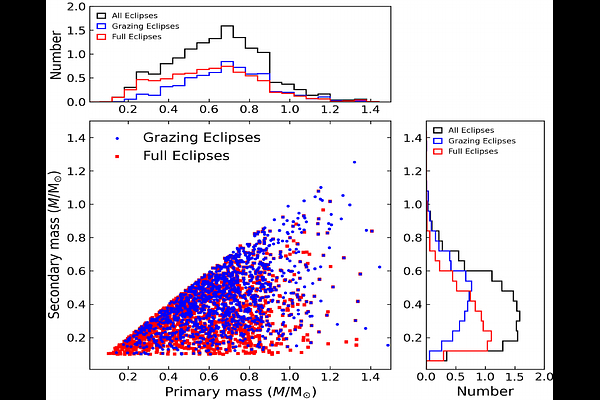Statistical Properties of Predicted Blended Eclipsing Binary False Positives in PLATO LOPS

Statistical Properties of Predicted Blended Eclipsing Binary False Positives in PLATO LOPS
J C Bray, U Kolb, S A Mills
AbstractWith the planned launch of the PLAnetary Transit and Oscillation of stars (PLATO) satellite mission in 2026, an understanding of the stellar properties and spatial distribution of astrophysical false positives (FPs) is essential to ensure the limited ground-based spectroscopy resources are used efficiently to target the most likely genuine planetary transit (PT) candidates. In our previous paper, Bray et al. (2023), we presented the expected blended eclipsing binary false positive (BEB) percentage in the proposed Southern PLATO field, which we referred to as SPF0. This was obtained from a detailed statistical analysis of a complete synthetic rendering of SPF0. In this follow-up paper, we present a more detailed analysis of the synthetic binary population creating these BEBs including the apparent radii of the planets mimicked, distances from Earth, orbital periods and binary component masses and evolutionary state.We examine the properties of the BEBs from 400 new independent simulations where random orbital inclinations were assigned to all synthetic binaries in the entire SPF0 region. We consider BEBs created by all eclipses of non-compact remnant binaries. Finally we examine the BEBs most likely to be mistaken for planets in the habitable zone which we define as fully or partially eclipsing binaries with periods between 180 and 1,000 days satisfying our critical inclination angle check.